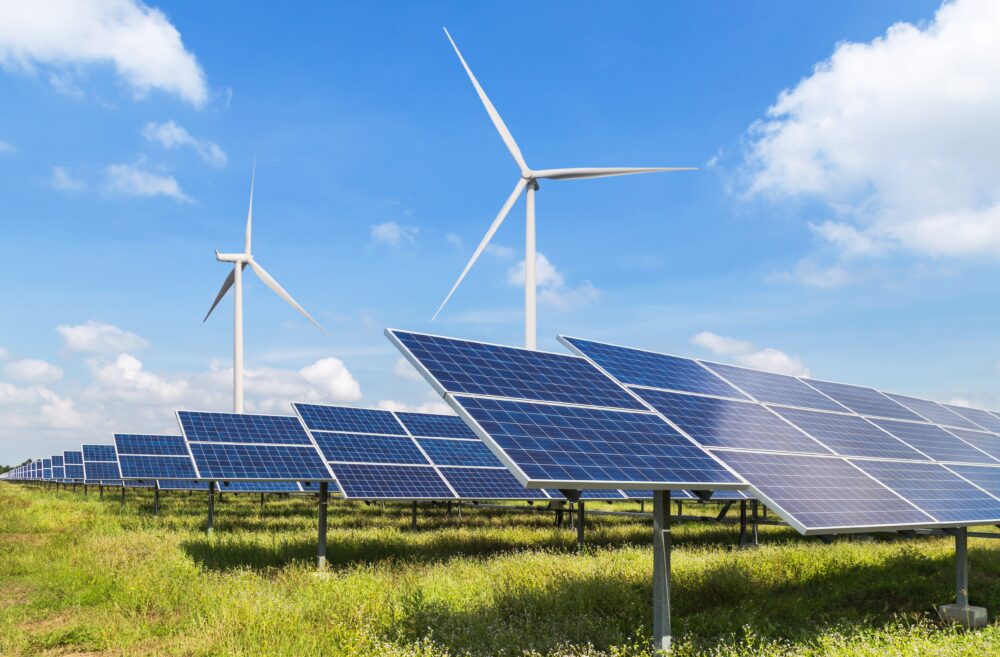As Texas moves closer to the much-awaited conclusion of another hot summer—thankfully without any electric grid emergencies so far—it’s a good time to break from the conversation on grid reliability and talk about the coming rise in Texans’ electric bills.
A common claim is that wind and solar are dampening the impact of rising natural gas prices. A Dallas Morning News article recently cited a study that said wind and solar are saving Texans $10-30 million per day in avoided natural gas fuel costs, which implies a savings of $3.7-$11 billion in 2022. While the fine print in the study cited above notes that the avoided costs don’t include the cost of purchasing the wind and solar power, which would likely bring the median savings estimate for 2022 from $7.5 billion down to about $2 billion, that number still sounds quite significant.
However, the savings from “cheap” wind and solar generation are not showing up on ratepayer bills. The average residential retail price of electricity in Texas was essentially flat over the past decade, despite natural gas prices being lower at the end of the decade than at the beginning. Rates are now set to rise considerably due to higher natural gas prices, debts from Winter Storm Uri in February 2021, and market reforms designed to bring more electricity generation into the system.
If wind and solar are as cheap and reliable as their proponents claim, why are Texans paying more for an electric grid that is becoming increasingly volatile?
Broader inflation does play a role in rising electricity costs. Wholesale electricity costs, which reflect the cost to generate electricity, are only about a third of the average ratepayer’s bill. Transmission, distribution, retailing, and overhead account for the rest.
But more important than that are the hidden costs of wind and solar being imposed on our grid. First is the cost of transmission and interconnections to bring their electricity to the market. Texans are paying twice as much in transmission fees as they were in 2011, about $2 billion annually, and almost all of that new money is being spent on new wind and solar development.
Scarcity pricing mechanisms are also being used more frequently to ensure power plants have enough financial incentive to ramp up quickly when wind and solar output declines. This change cost Texans nearly $500 million in the first five months of 2022 and will likely cost well over a billion dollars for the entire year.
In addition, the Public Utility Commission of Texas is paying power plants to stay online when they might otherwise choose not to operate, to the tune of $400 million in 2021 and nearly $800 million already in 2022. Experience in Texas, California, and around the world is showing that expensive command-and-control measures like this to keep the lights on come part and parcel with high levels of subsidized wind and solar generation.
These numbers show a direct cost of transmission and reliability measures to support wind and solar in the neighborhood of $4-$5 billion annually, double the $2 billion in estimated fuel savings in 2022. And these costs are being paid entirely by ratepayers, not by wind and solar developers, thereby giving those developers an implicit subsidy in the market.
There is also the cost of outages, as was starkly manifested during Winter Storm Uri. While it is impossible to put a precise number on the contribution of wind and solar to the costs incurred by Texas ratepayers during Uri, what is clear is that Texas could have avoided the disastrous outcome if it had avoided overinvesting in wind and solar generation over the prior decade.
More than $60 billion in private capital has been invested in new wind and solar generation over the past decade plus, along with nearly $10 billion in transmission lines. All that investment produced on average 10% of the state’s electricity during the storm, about 5 GW, and only 2% at the height of the storm.
Yet $30 billion of that $70 billion investment could have financed a large amount of weather resiliency and natural gas storage, and prevented the premature retirement of more than 5 GW of coal and natural gas during the five years prior to the storm. The roughly 2.5 GW of wind and solar production during the storm that was purchased with that $30 billion would not have been missed at all.
Because the reliability and transmission costs of wind and solar are absorbed through regulatory charges to ratepayers, the wholesale market favors wind and solar generation without accounting for their total cost to the system. Combined with an extra push from federal subsidies for wind and solar that are set to be extended another decade, more wind and solar will be built, and these hidden costs will continue to rise—along with Texans’ electric bills.
Texas regulators should make wind and solar developers to pay their share of those costs, rather than further subsidize them by making ratepayers foot the entire bill. Unfortunately, the consensus from Texas regulators seems to be that we simply need more investment in all types of generation, without appropriate cost allocation to wind and solar. Only by requiring wind and solar to purchase firming power can Texas ensure it only builds as much wind and solar as its grid can reliably handle. Texas does not need more investment. It needs smarter investment.
Brent Bennett, Ph.D., is the policy director for Life:Powered, an initiative of the Texas Public Policy Foundation to raise America’s energy IQ.
Dr. Bennett has an M.S.E. and Ph.D. in materials science and engineering from the University of Texas at Austin and a B.S. in physics from the University of Tulsa. His graduate research focused on advanced chemistries for utility-scale energy storage systems.

